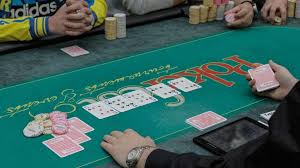9 Card Stud Strategy
Iwagambo has been known as the “Game of the Month” for poker players, and for good reason, 9 card stud is one of the more popular poker variations in the world. Some think it’s boring, but it’s not the most exciting game by far. In fact, blackjack can be more exciting, since you are playing against the house and not against individual cards. Hold your nose if you’ve heard that this game is “years ago” but it’s not. It’s actually been around since the 1700’s, and you can thank European players for popularizing it.
This game is characterized by a maximum of four players and a hand comprised of all jacks, queens, kings, aces and eights. Technically, that’s it, but the variations allow for quite a few more hands. For example, Seven-Card Stud allows a player to form four hands, with the best hand being a pair of jacks. Seven-Card Stud Hi/Lo is another variation and allows you to have a hand with three of a kind if you have a hi-lo card.
Some 9 Card Stud rules can be confusing to the newer player that doesn’t know all the lingo. However, you don’t have to be taken to the confusing part. The rules are simple and the game only involves three types of hands. They are:
1) The protect-the-pair hand, which is like protect-the-hearts-from-your-two-two hands.
2) The instinctive-theory hand, which is like your basic hot-or-cold hand.
3) And, the performing hand, which is just a hand that needs to be completed.
When you’re playing 9 Card Stud, you always protect the best hand you have. That means that if your up-cards are a pair of tens, and you have the pair of aces, you want to hold off on raising or placing a bet until all your opponents have folded. This is called protection of the best hand. The dealer will then deal your substitute cards. If you win, you are then given the option of moving up to the top card of the players in the round by betting or folding. If you fold, you move back down to the lower card level. In casinos, the minimum bet is usually half the minimum bet. However, it isn’t standard and other casinos may set it at a standard 3-5 times the minimum bet.
The most confusing part of the game for new players is dealing the cards. Unlike Texas Hold-Em, which is a game of position and chip stacks, all players will receive the same number of cards. The nagapoker will deal 2-4 cards to each player, and the player with the highest card is the dealer. Normally, it’s the player with the highest card that determines who deals first. However, the European “mini-dealt” rule allows the player to deal first, even if the dealer places the cut card on top of the player.
When it comes to pre-flop play in 9 Card Stud, it’s easy to understand. The player to the immediate left of the dealer acts first, and has several options. The player may bet, check, or fold. Generally, most players check because they don’t want to risk the chance of losing a bet. If the player checks, she has made no decision and the player directly to her left keeps betting. The player may choose to call, but in most cases, the player pads the pot to keep her playing just to keep the players keep guessing as to what action she’s going to take.
The player to the dealer’s left acts first in this situation. If the dealer deals a natural blackjack (21 points), the player automatically wins (the game is then called “blackjack”). If the dealer deals another card that beats the blackjack, the player will still win, but will be paid at 2 to 1. In this case, the player has played the dealer and can’t bet again, so she keeps her bet and the original bet in the hand.
The player can also opt to double down. When the player sees that the dealer has an up card that’s greater than a 9, she may choose to double down (she must have 9 points or more to do so). As in the other cases, the player has a limited amount of time to decide whether to hit or hold. There’s no penalty if the round goes to the dealer without a blackjack, so it’s typically advised that you either select to hit or bet once a blackjack is out.
